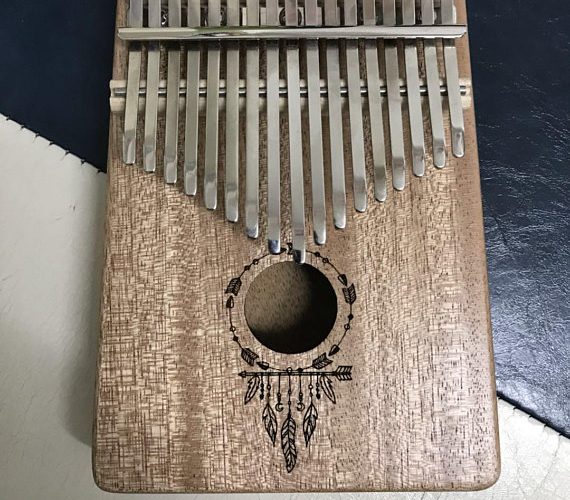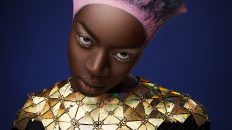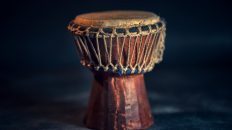The Mbira is an African musical instrument consisting of a wooden board (often fitted with a resonator) with attached staggered metal tines, played by holding the instrument in the hands and plucking the tines with the thumbs. The mbira is usually classified as part of the lamellaphone family and part of the idiophone family of musical instruments. Members of this broad family of instruments are known by a wide variety of names. In the Anglo world it is often called a thumb piano, as well as marímbula (also kalimba) in the Caribbean Islands.
Both Joseph H. Howard, owner of the largest collection of drums and ancillary folk instruments in the Americas, and Nigerian drummer Babatunde Olatunji argue that the mbira is thoroughly African, being found only in areas populated by Africans or their descendants. In Eastern and Southern Africa, there are many kinds of mbira, often accompanied by the hosho, a percussion instrument. The mbira was reported to be used in Okpuje, Nsukka area of the south eastern part of Nigeria in the early 1900s. It is a particularly common musical instrument of the Democratic Republic of Congo and the Shona people of Zimbabwe. It is also often an important instrument to be played at religious ceremonies, weddings, and other social gatherings.
Mbira came to prominence after the worldwide stage performance and recordings of Thomas Mapfumo on the 1980s, whose music is based on and includes the mbira; the work of Dumisani Maraire, who brought marimba and karimba music to the American Pacific Northwest; Ephat Mujuru, who was one of the pioneer teachers of mbira in the US; as well as the writings and recordings of Zimbabwean musicians made by Paul Berliner. Commercially produced mbiras were exported from South Africa by ethnomusicologist Hugh Tracey from the 1950s onward, popularizing the instrument outside Africa.








What a lovely lesson on the mbira .Being from Southern Africa I always thought it was an instrument that was unique to us only.
This is an amazing instrument!